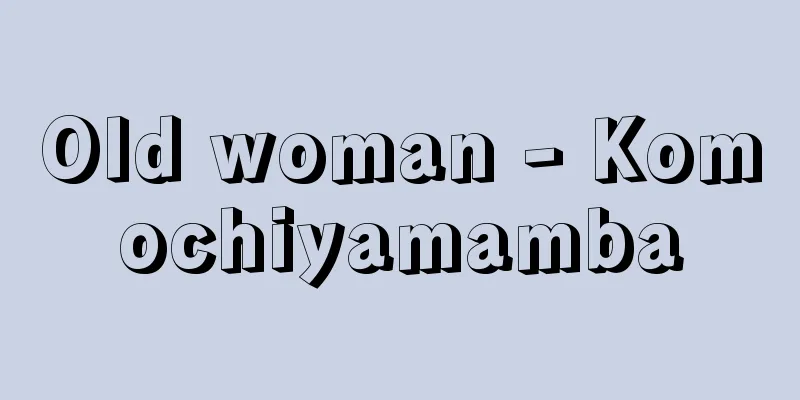Merchant

|
Under commercial law, there are two types of merchants: proper merchants and fictitious merchants. (1) A proper merchant is a person who engages in commercial transactions in his/her own name (Article 4, Paragraph 1 of the Commercial Code). "Engaging in one's own name" means becoming the subject of rights and obligations under private law, and it has nothing to do with who is the name of the person who reports to the administrative agency, or who the profits and losses of the business belong to. "Engaging in a business" means repeatedly and continuously engaging in the same kind of activity with the purpose of profit, but the intention to run a business must be objectively recognized. The activities of teachers, doctors, lawyers, artists, etc. are not considered to be primarily for the purpose of profit in the general sense of business, so these people are not merchants. "Commercial activities" here refers to the basic commercial activities that are the basis of the concept of a merchant, and refer to absolute commercial activities (Article 501 of the Commercial Code) and commercial commercial activities (Article 502 of the Commercial Code). Our Commercial Code has been based on the principle of commercial activity law, which derives the concept of a merchant from the concept of commercial activities. (2) A fictitious merchant is a person who does not engage in commercial activities but sells goods through a store or other similar facility, or engages in mining (Article 4, Paragraph 2 of the Commercial Code). In the past, our Commercial Code, which has based its concept of merchants on commercial activities, did not treat those engaged in primitive industries such as agriculture, forestry, fishing, and mining as merchants. However, the 1938 (Showa 13) amendment to the Commercial Code recognized fictitious merchants and expanded the concept of merchants by focusing on business facilities and business forms. Previously, selling fruit produced in one's own orchard was not a commercial activity, so such fruit shops were not merchants and were not subject to the Commercial Code. However, by recognizing fictitious merchants, if they sell fruit through a store or other business facilities, they are now subject to the Commercial Code. Furthermore, since mining is usually run through large-scale business facilities, it is natural that it is subject to the Commercial Code as a business law. The Companies Act, enacted in 2005, stipulates that acts performed by a company as part of its business and acts performed for that business are considered commercial acts (Article 5 of the Companies Act). A company is established by registering its incorporation at the location of its head office (Article 49 of the Companies Act), and after dissolution, it ceases to exist until completion of liquidation (Article 929 of the Companies Act). The qualification of a merchant, which is a natural person, is acquired by the commencement of a certain type of business (in the case of a proper merchant) or a certain form of business (in the case of a fictitious merchant) as stipulated in the Commercial Act, and is lost upon its termination. However, it is interpreted that a person acquires the qualification of a merchant when the intention to start a business is objectively recognized, that is, at the stage of preparation for starting a business. [Toda Shuzo] historyIn ancient times, merchants' activities were centered around peddling and markets. However, they were not specialized merchants, and there was a strong tendency for producers to sell their own products. The appearance of specialized merchants can be confirmed around the Nara period. A government-run market was set up in Heijo-kyo, where merchants with city registration bought and sold goods. Later, in the Heian period, eastern and western markets were set up in the capital, where merchants without city registration also bought and sold goods. Meanwhile, around this time, specialized peddler merchants also appeared, and they began to travel around selling local specialties. Towards the end of the Heian period, merchants with permanent stores appeared, mainly in Kyoto. They gained power by forming connections with influential temples and shrines. In the Middle Ages, merchants, who had been gaining power since the end of ancient times, began to obtain monopoly rights over business in each type of business. These merchants, known as Toimaru, began to emerge around the end of the Kamakura period. The Toimaru were active in Kyoto, Nara, and other major cities throughout the country, monopolizing the relay and buying and selling of goods. They formed "za" (a group of merchants) as organizations for this monopoly, and began to regulate not only trading activities but also the means of transportation involved. This trend was also seen among merchants in the provinces, who began to assert monopoly rights over business in village markets as well. On the other hand, another characteristic of the Middle Ages was the rise of financial institutions such as kashiage and doso, and sake merchants. They linked up with the shogunate and daimyo, and in exchange for supplying them with goods, they gained various privileges, and thus gained power. The early modern period was a time when merchants specialized and differentiated. In other words, we see the emergence of the forms of business that continue to this day, such as wholesale, brokerage, and retail. They each formed associations. These were called "stock associations." Stock associations limited the number of people who could join and monopolized buying and selling. In the early days, this had the effect of stabilizing the supply of goods, but as the commodity economy evolved, it became a factor that hindered smooth buying and selling. In an attempt to break through this, outside merchants rose to prominence, but there were constant conflicts between them and the fellow merchants. In response to this, merchants based in rural areas appeared, and the monopoly distribution system began to crumble. The early modern period was also a time when the so-called wealthy merchants appeared. These merchants operated businesses such as sake brewers, money exchangers, rice merchants, kimono merchants, cotton wholesalers, oil wholesalers, and shipping companies. At first, they were involved in specialized occupations, but as their businesses expanded, many of them began to take on multiple jobs. Representative examples include Konoike, Mitsui, Sumitomo, Shirokiya, and Daimaru. Developments since the modern era have been complex, but what is particularly notable after the opening of the ports is the emergence of merchants dealing in imported goods, and the transformation of wealthy merchants from the early modern period into zaibatsu. Examples of the former include a Japanese paper wholesaler becoming a Western paper wholesaler, or a rapeseed oil wholesaler becoming an oil wholesaler. Examples of the latter include Mitsui and Sumitomo, which are representative examples of businesses that diversified, and who eventually formed financial circles and came to have influence over politics. [Kanji Kurumizawa] FolkloreThere are three ways goods are sold: peddling, markets, and permanent stores. The ideal for a merchant is to set up a store. However, in order to do so, it is necessary to be able to secure a stable customer base within a certain area, and especially in pre-modern society, there were only a few places that could fulfill this requirement. For a long time, there was an era in which the majority of merchants had no choice but to rely on peddling or markets. In particular, peddler is said to be the pioneer of merchants, and one theory is that the word originates from this. "Shonin" is now called "shonin," but it was once called "akindo." It is said that "akindo" is a corrupted version of "akiudo." In other words, it is said that the word "akiudo" came to be called because it refers to people who come to rural areas in the autumn after the harvest to sell various items. There are various types of peddlers, ranging from small-scale peddlers who sell by themselves to large-scale peddlers like the caravans that traveled up and down the Silk Road. It is the small-scale peddlers that were closely related to the lives of ordinary people. Their forms also varied, from those who come almost every day to those who come only during certain seasons. They also differ in the way they sell. For example, in the Iwafune region of Niigata Prefecture, fish sellers called isaba come every day and sell from house to house, while kimono shopkeepers called tabeto come at the end of the Bon Festival and stay in a specific house in the village for several days, and villagers go there to buy things. There are fewer peddlers now, but some still do, such as Oharame in Kyoto and medicine sellers in Toyama. Merchants who go to markets also travel around like peddlers. Markets were usually held on different days in different villages within a certain area, and merchants moved around according to the dates of the markets. There is also a type of market called "standing peddlers" that is considered to be an intermediate form between peddlers and markets. Merchants who went to the market usually set up temporary stores and sold there all day, but street vendors, although they went to the market, literally sold their wares while standing, and moved on when the opportunity arose. The number of merchants with permanent stores began to increase during the Edo period, and it is only in recent years that they have become the majority. For a long time, merchants were travelling merchants, but they took advantage of this characteristic to not only sell goods, but also to provide information to people at the time who had few opportunities to learn about the outside world. In addition to the economic aspect, it is important to note that merchants also introduced various cultures to various places. [Kanji Kurumizawa] "Peddling and Rural Areas" (included in "The Complete Works of Yanagita Kunio 16," 1962, Chikuma Shobo) ▽ "Distribution History I," edited by Toyoda Takeshi and Kodama Kota (Systematic Japanese History Series 13, 1969, Yamakawa Publishing) ▽ "Complete Works of Law 27, General Provisions of Commercial Law, New Edition, by Osumi Kenichiro (1978, Yuhikaku)" ▽ "Medieval Merchants and Transportation" (Toyoda Takeshi Collected Works, Vol. 3, 1983, Yoshikawa Kobunkan) ▽ "Folklore of Markets and Peddling: Research on the Traditions of Transportation and Trade 2," by Kitami Toshio (1985, Iwasaki Bijutsusha) ▽ "Iwanami Lecture Series on World History 15: Merchants and Markets," edited by Kabayama Koichi et al. (1999, Iwanami Shoten) ▽ "Business Places and Society," edited by Yoshida Nobuyuki (2000, Yoshikawa Kobunkan) "The Origin of Japanese Merchants" by Sasaki Ginya (Kyoikusha History Paperbacks) [Reference] | | | | | | | | | |Tomaru| | | |Source: Shogakukan Encyclopedia Nipponica About Encyclopedia Nipponica Information | Legend |
|
商法上、商人には、固有の商人と擬制商人とがある。 (1)固有の商人は、自己の名をもって商行為をなすことを業とする者である(商法4条1項)。自己の名をもってするとは、私法上の権利義務の主体になることであって、行政官庁に対する届出の名義がだれであるとか、営業上の損益の帰属者がだれであるかなどは関係がない。また、業とするとは、営利の目的をもって同種の行為を反復継続することであるが、営業を営む意思は客観的に認められることを要し、教師、医師、弁護士、芸術家などの行為は、一般取引の通念上、営利の目的が主要なものとは認められないから、これらの者は商人ではない。ここでいう「商行為」は、商人概念の基礎となる基本的商行為を意味し、絶対的商行為(同法501条)と営業的商行為(同法502条)をさす。わが商法は、本来商行為概念から商人概念を導き出す商行為法主義をたてまえとしてきた。 (2)擬制商人とは、商行為を業としないが、店舗その他これに類似する設備によって物品の販売を業とする者、鉱業を営む者をいう(商法4条2項)。従来、商行為概念を基礎として商人概念を形成してきたわが商法の立場からは、農業、林業、漁業、鉱業のような原始産業を営む者を商人として取り扱わなかったが、1938年(昭和13)の商法改正で擬制商人を認め、企業的設備や企業形態に着目して商人概念を拡大した。従来、自分の果樹園で生産した果物を販売する行為は商行為でないために、そういう果物屋は商人ではなく、商法の適用を受けなかったが、擬制商人を認めることにより、店舗その他の企業的設備をもって販売すれば商法の適用を受けることになった。また、鉱業は通常、大規模な企業的設備をもって経営されるから、企業法としての商法の対象となることは当然である。なお、2005年(平成17)に制定された会社法は、会社がその事業としてする行為およびその事業のためにする行為は商行為とすると規定している(会社法5条)。会社は、その本店の所在地において設立登記することによって成立し(同法49条)、解散後、清算の結了を待って消滅する(同法929条)。自然人である商人の資格は、商法が定めている一定種類の営業(固有の商人の場合)、または一定形式における営業(擬制商人の場合)の開始によって取得し、その終了によって喪失するが、事実上開業の意思が客観的に認められるとき、すなわち開業準備行為の段階で商人資格を取得するものと解されている。 [戸田修三] 歴史古代において、商人の活動する場は行商と市(いち)に求められた。ただし、彼らは専門の商人というのではなく、生産者がつくったものを自ら売りに出すという色彩が濃かった。専門の商人の出現が確認されるのは奈良時代前後である。平城京(へいじょうきょう)には官営の市が設けられ、市籍をもつ商人が売り買いを行った。下って平安時代には、都に東西市が設けられ、市籍をもたぬ商人も交えて売り買いが行われた。一方、このころには行商人のなかにも商い専門のものが現れ、とくに各地の特産物を売り歩くことがなされるようになった。平安末期になると、京都を中心に常設店舗をもつ商人が出現する。彼らは権門寺社と結び付くことにより、力をつけていった。 中世には、古代末期から力をつけてきた商人が、職種ごとに営業独占権を得るようになってゆく。問丸(といまる)とよばれるものがそれで、鎌倉末期ごろから台頭してくるのである。問丸は、京都・奈良のほか、全国主要都市で活動し、物資の中継・売買を独占した。独占のための組織として「座」を結成し、商い活動だけでなく、それにかかわる輸送手段まで規制するようになった。この傾向は地方の商人も同様で、村の市でも営業独占権を主張するようになってゆく。一方、借上(かしあげ)・土倉(どそう)などの金融業者、酒屋が力をつけてくるのも中世の特色である。彼らは幕府・大名と結び付き、財を供給するかわりに、さまざまな特権を得て、力をつけていった。 近世は、商人が専門・分化した時代である。すなわち、問屋・仲買・小売という、いまにつながる形態の発生をみるのである。彼らはそれぞれに仲間を結成した。「株仲間」とよばれるものである。株仲間は、加入できるものの人数を制限し、売買を独占した。これは、初期には物資供給の安定という効果があったが、やがて商品経済が進化してくると、円滑な売買を阻む要因となった。これを突き破ろうとして、仲間外商人が台頭してくるが、仲間商人との間に紛争が絶えなかった。これに呼応するように、農村では在郷商人が出現し、独占的な流通体制が崩れていったのである。なお、近世はいわゆる豪商が出現した時期でもあった。これらの商人は、蔵元、両替商、米商、呉服商、木綿問屋、油問屋、海運業などを営み、初めは専門職種に携わっていたが、規模が拡大するにつれ、兼業とするものが多くなった。鴻池(こうのいけ)、三井、住友、白木屋、大丸などが代表例である。 近代以降の展開は複雑であるが、開港後とくに目だつことは、輸入品取扱い商人が出現したこと、および近世の豪商が財閥となったことである。前者では、たとえば和紙問屋が洋紙問屋となったり、菜種油問屋が石油問屋になったりした例があげられる。後者では、三井・住友などが多角化をした代表例であるが、彼らはやがて財界を形成し、政治に対しても影響力をもつようになった。 [胡桃沢勘司] 民俗品物を販売する際とられる形態としては、行商、市、常設店舗の3種がある。商人の理想としては店舗を構えることこそ第一である。しかし、そのためには一定地域内で安定した顧客を確保できることが条件であり、とくに前近代社会においてはそれを満たせる所は限られていた。行商や市によらざるをえない商人が大多数を占める時代が、長く続いたのである。とくに行商人は商人のパイオニアといわれる存在であり、一説にはその語源はこれに由来するともいわれている。「商人」はいまは「しょうにん」というが、かつては「あきんど」といわれていた。「あきんど」は「あきうど」が訛(なま)ったものだという。すなわち、収穫を終えた秋、農村にさまざまな物を売りにくる人であるから「あきうど」とよばれるようになったというのである。 行商人にはさまざまなタイプがみられ、1人で売り歩く小規模なものから、シルク・ロードを往来した隊商のような大規模なものまであった。庶民の生活に密着していたのは、むしろ小規模なものである。その形態も、ほとんど毎日くるものから、決まった季節にのみくるものまで、多様であった。これらは販売法も違っている。たとえば新潟県の岩船地方では、毎日くるイサバとよばれる魚売りは一軒ごとに売り歩くが、盆暮れにくるタベトとよばれる呉服屋は村の決まった家に数日間滞在し、村人がそこまで買いに行った。行商人はいまは少なくなったが、京都の大原女(おはらめ)、富山の薬売りなど、なお行われているものもある。市に出る商人も、回り歩くことは行商人と同じであった。市は、ある地域内で村ごとに日を違えて開かれるのが通例で、商人たちはその開催日にあわせて移動したのである。なお、行商と市の中間形態とされるものに「立ち売り」とよばれるものがある。市に出る商人は、通常仮店舗を構えて終日そこで販売するが、立ち売りは市には出るものの、文字どおり立ったまま販売し、機をみて移動していった。 常設店舗をもてる商人が増加したのは江戸時代からで、これが多数派になったのはつい近年のことなのである。商人は回り歩くもの、という時代が長く続いたわけだが、この特徴を生かし、彼らは単に品物を販売するだけでなく、外界のようすを知る機会の少ない当時の人々に情報をもたらす役割をも担っていた。経済的側面とともに、さまざまな文化が商人によって各地に伝えられたことには、見逃せないものがある。 [胡桃沢勘司] 『『行商と農村』(『定本柳田国男集16』所収・1962・筑摩書房)』▽『豊田武・児玉幸多編『流通史Ⅰ』(『体系日本史叢書13』1969・山川出版社)』▽『大隅健一郎著『法律学全集27 商法総則』新版(1978・有斐閣)』▽『『中世の商人と交通』(『豊田武著作集 第3巻』1983・吉川弘文館)』▽『北見俊夫著『市と行商の民俗 交通・交易伝承の研究2』(1985・岩崎美術社)』▽『樺山紘一他編『岩波講座 世界歴史15 商人と市場』(1999・岩波書店)』▽『吉田伸之編『商いの場と社会』(2000・吉川弘文館)』▽『佐々木銀弥著『日本商人の源流』(教育社歴史新書)』 [参照項目] | | | | | | | | | | | | | | |出典 小学館 日本大百科全書(ニッポニカ)日本大百科全書(ニッポニカ)について 情報 | 凡例 |
>>: Recognition - shounin (English spelling)
Recommend
Scattering of flowers - Sange
Scattering flowers to praise and offer to Buddha....
Gotra (English spelling)
The patrilineal clan structure of Indian Brahmins....
Acetophenone - acetophenone
An aromatic ketone. It is also known as methyl ph...
Dingyue Mountains - Hinoto Dakesanchi
A mountain range that stretches along the border ...
Arnaut Daniel
A troubadour active at the end of the 12th century...
Parnassia palustris (Plum blossom) - Parnassia palustris (English spelling)
A perennial plant of the Saxifragaceae family, it ...
Araumi Shoji - Araumi Shoji
This shoji screen stands in front of the Hagi door...
Louis XV - Louis
King of France (reigned 1715-1774). Great-grandson...
Kinzig [river] - Kinzig
…The Rhine is a region of the Rhine that is forme...
Rarefied gas tunnel
In supersonic flows, the Schlieren method is used...
Lucas van Leyden
1489 or 94-1533 Dutch painter and printmaker. Born...
Marsh, Othniel Charles
Born October 29, 1831 in Lockport, New York. [Died...
Spirran
[synonym] spiro compound Source: Morikita Publish...
Idoteidae
…General term for crustaceans of the Isopod famil...
cline
…For example, it is known that in mammals of the ...

![Bouquet garni (English spelling) [France]](/upload/images/67ccb15a8037a.webp)







